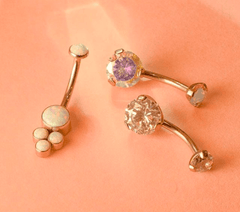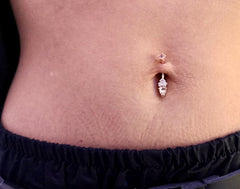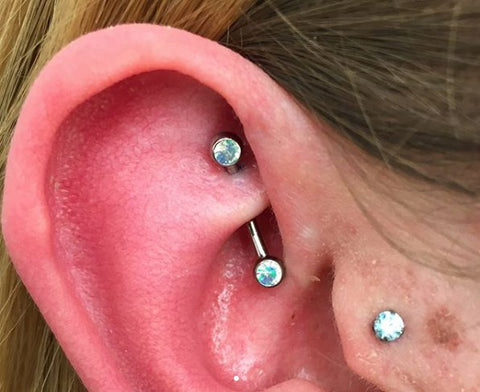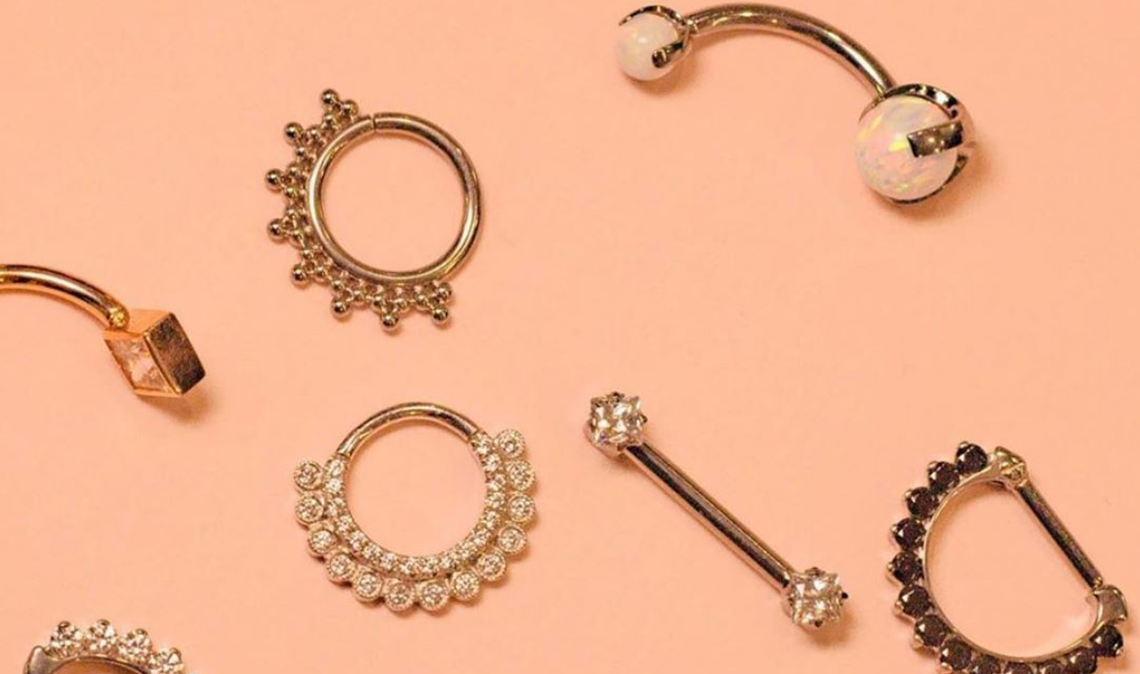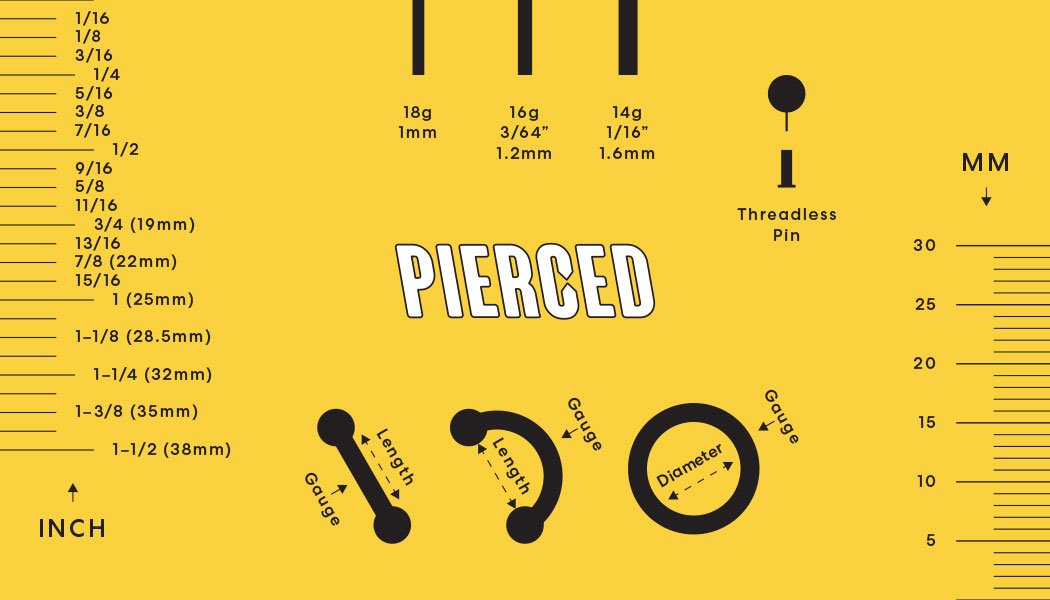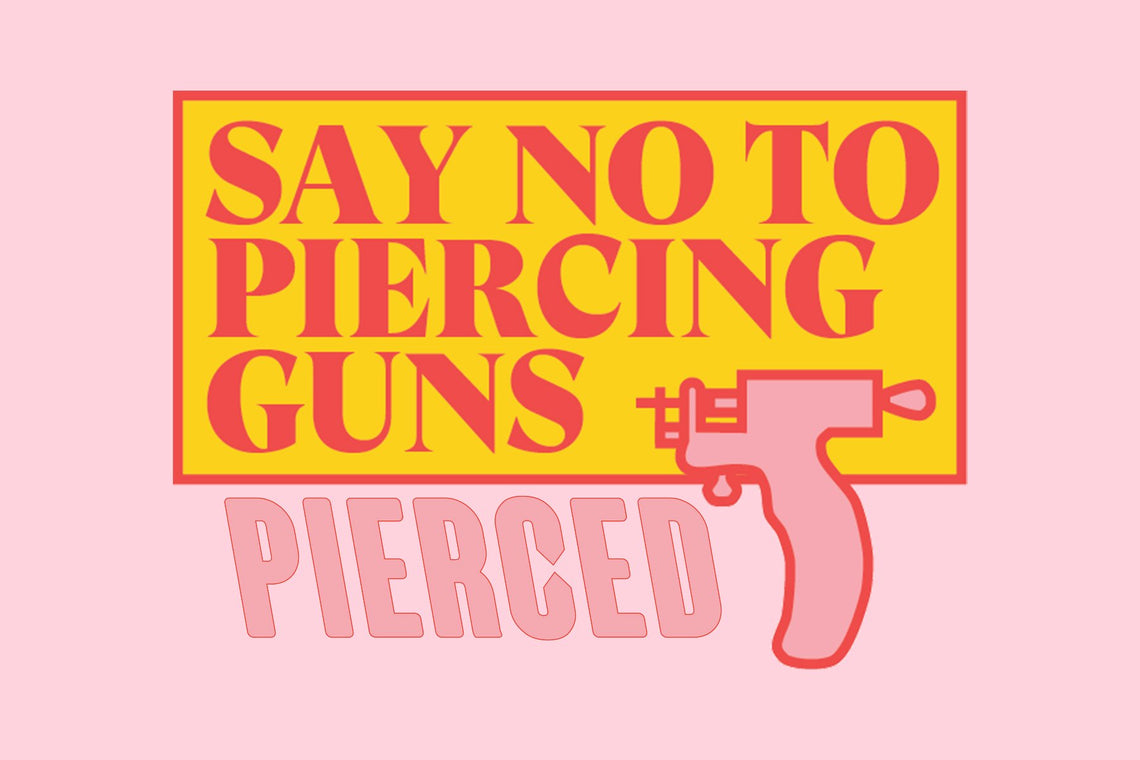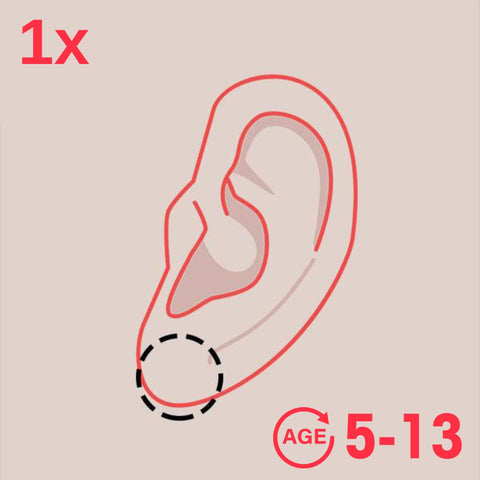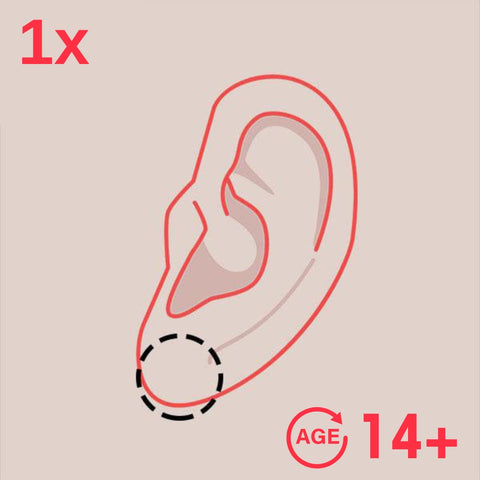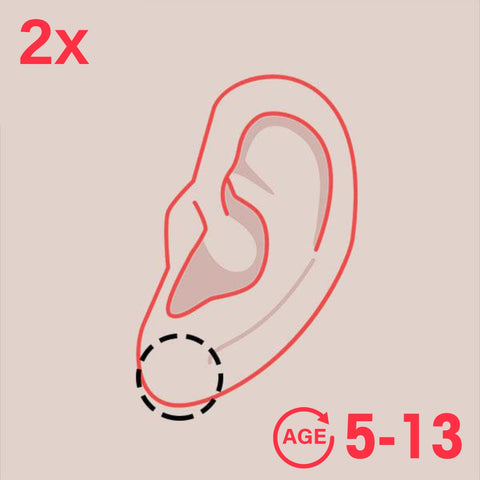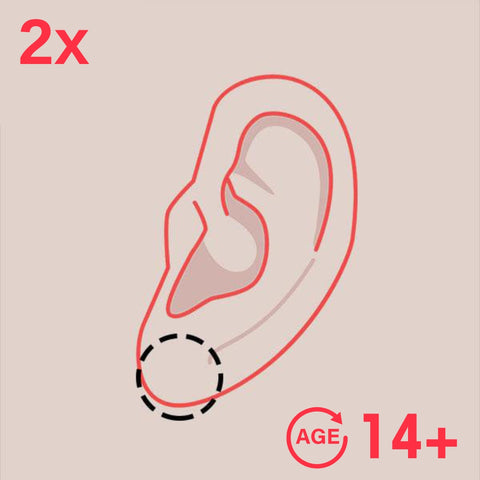Rook piercings have gained significant popularity in recent years, becoming a sought-after choice for individuals seeking unique and stylish ear piercings. If you're considering getting a rook piercing or simply curious about this fascinating form of body art, you've come to the right place. In this comprehensive guide, we will explore everything you need to know about rook piercings, covering topics such as the procedure, aftercare, benefits, and risks.
What is a Rook Piercing?
A rook piercing is a vertical piercing of the cartilage of the antihelix of the ear. Simply put, it’s a piercing of the uppermost inner ridge of the ear.
A rook piercing can is usually 14 or 16 gauge, based on the prominence of your antihelix. Rook piercings are common and an experienced professional can perform the piercing safely in under ten minutes.
What are the Different Types of Rook Piercing Jewellery?
Rook piercing jewellery comes in a variety of styles that suit any style, whether you want to go subtle or make a statement. The varieties of jewellery include:
- Studs
- Rings
- Hoops
- Ball rings
- Bead rings
- Barbell
Each of these varieties come in an endless number of styles in both 14 gauge and 16 gauge. While the piercing heals most piercers recommend wearing a simple barbell, but after that, the sky’s the limit!
As with any ear jewellery, it’s important to choose quality materials. For comfort and safety, choose light and hypoallergenic piercing jewellery metals such as surgical titanium or gold.
How Much Does a Rook Piercing Hurt?
A rook piercing has to penetrate through two layers of cartilage, so it can hurt more than other cartilage piercings. As always pain is subjective, and our piercing pain scale, people rate rook piercings a 5 to 6 out of 10. Fortunately, the process is fast, and the sting dulls quickly once completed.
How Long Do Rook Piercings Take to Heal?
Primary healing of the cartilage for rook piercings is around 6 months. Full healing of the area can take between 12 and 18 months. This depends on your individual body and how attentive you are with your piercing aftercare and cleaning.
Keeping your hands off your new piercing helps you heal quickly. Touching, pulling, or pressing the piercing can cause inflammation and slow recovery. Thankfully, agitating or jostling this piercing is more difficult than other ear piercings as it rests deeper within the ear.
Aftercare: How to Care for Your Rook Piercing
Rook piercings can become infected, but regular cleaning lowers the risk. Here are the steps to take to keep your piercing clean:
- Create a sterile saline solution by dissolving non-iodized salt in distilled water.
- Warm up the mixture on the stove or in your microwave till it is lukewarm or body temperature.
- Soak up the solution using a cotton ball or clean cloth, and apply to both ends of the piercing for several minutes.
- Gently wipe away any crust, blood or puss with your compress. Otherwise, do not move the piercing.
To minimize the risk of infection, for the first month or two, clean the area three to four times a day, and then reduce to once in the morning and evening until fully healed.
Potential Risks and Complications
While rook piercings are generally safe, it's important to be aware of potential risks and complications. These can include:
- Infection: Poor aftercare or improper hygiene practices can lead to infection. Signs of infection include excessive swelling, redness, pus, and pain.
- Migration and Rejection: In some cases, the body may reject the piercing, causing it to migrate or push out. This can result from factors such as incorrect placement or the body's natural response.
- Allergic Reactions: Individuals with metal allergies should be cautious when selecting jewelry. Titanium, niobium, and surgical-grade stainless steel are often recommended for sensitive individuals.
- Keloids and Hypertrophic Scarring: Some individuals may be prone to developing keloids or hypertrophic scars, which are raised and thickened scar tissue. Proper aftercare can minimize the risk of scarring.
Conclusion
Rook piercings are a captivating form of body art that allows individuals to express their style and individuality. By understanding the procedure, aftercare, benefits, and potential risks, you can make informed decisions and ensure a successful rook piercing experience. Remember to choose a professional piercer, follow proper aftercare practices, and enjoy your stunning rook piercing with confidence.
Get a Cartilage Piercing
Whether it’s your first piercing or one of many, a rook piercing is a great option for any ear. At Pierced, our expert piercers provide professional piercing in a safe and sanitary environment. Book a piercing today.
Piercing Studios Near You
Mississauga
Square One Shopping Centre
100 City Centre Drive, Mississauga,
ON L5B 2C9
Phone
+1 (905) 232 -7226
Need an Experienced Piercer in Mississauga?
Working with an experienced piercer can make all the difference when it comes to your piercing experience. If you’re in the Mississauga, Ontario area and have any questions about ear piercing, body piercing or jewelry, give us a call or stop by our piercings studio today. We’d love to help walk you through what to expect and help you choose the right option.

